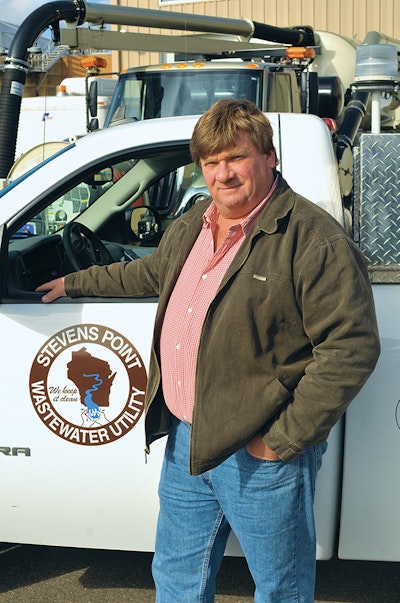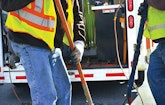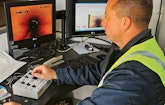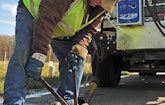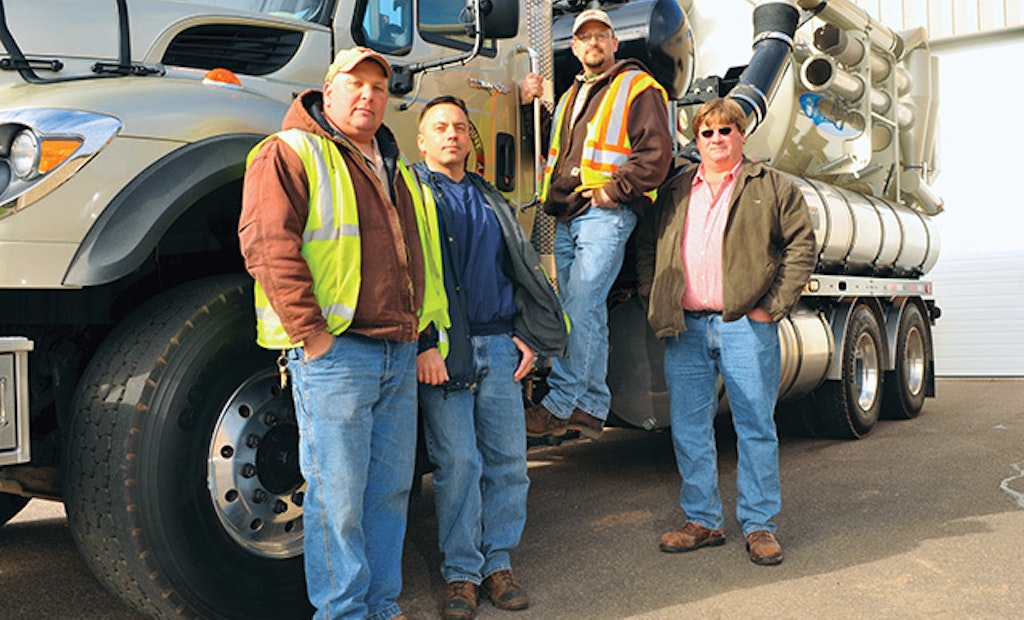
Interested in Rehab/Relining?
Get Rehab/Relining articles, news and videos right in your inbox! Sign up now.
Rehab/Relining + Get AlertsWhen Rob Molski moved out of the city Engineering Department in Stevens Point, Wis., and became the collections system manager at the end of 2007, the city’s sewer system had gone years without adequate maintenance. It didn’t take long before the right people, plans and equipment were in place to whip the system’s 140 miles of sewer pipe into shape.
There were plenty of immediate tasks at hand, but Molski and his people kept their sights on the utility’s long-term goals. They formulated a plan to get a clear picture of the system’s condition and set out to clean and televise every inch of pipe.
In the past, the city had hired contractors to televise sewer lines, but they inspected only small sections at a time, and progress was limited.
“We maybe had a budget of $26,000 per year to use for televising,” says Molski. “At 50 cents a foot, it wasn’t really getting us there. So we decided we’d buy our own equipment.”
There was about a 12-year period where the city’s aging collection system received minimal maintenance. Many planned projects were never started due to lack of funds, but budget moves — the city wanted to fund collections work out of the Wastewater Utility — ultimately led to the reorganization of some city positions and the formation of the collections system crew at the Wastewater Department.
“Getting the crew over here and having them working on the system has made a difference, and it took them off the city’s budget as state aid started falling off,” Molski says.
Before the change, sewer maintenance was divided between the wastewater treatment plant crew and the Streets Department, but other responsibilities often took focus away from the sewer system.
“The guys used to plow snow and fill in where needed. They don’t anymore,” Molski says. “Time is focused on what it’s supposed to be focused on. We have a good crew, good equipment, and our boss is really working with us to get us what we need.”
The utility is also moving toward implementing a new GIS that ties in all its inspection data and video.
Around the city
In 2006, the city purchased its own televising equipment. Molski came on board shortly thereafter, and in 2007 the city really started to dig into inspection and maintenance of its sewer lines.
“In the first three years we cleaned pipes that had never been cleaned before,” Molski says. “I can guarantee it because we found concrete on some of the benches in the manholes. They were probably televised when they were first in-stalled, but when the road surface was put on, they put two inches of asphalt on the first year. The second year they raised the castings two inches, cemented the rings, and some of the mortar fell down into the channels. It was still there, like a dam, with the flow going over or around it. There was some nasty stuff backed up behind it.”
The department now follows a program where a section of the system gets cleaned every year. The team just recently completed the first full rotation through the system and is back at the beginning of another cycle.
“Basically every year we clean a third of the city,” Molski says. “We have the city divided into three sections — a northern section, a central section and a southern section — and we just work our way through, concentrating on cleaning one of those sections a year. We know where we have bad root problems and we’ll cut them every year or if they’re really bad, twice a year to prevent backups.
“We start out flushing the dead ends in the winter to get everything moving so we don’t have solids rolling up. Then we go back when it starts getting warmer out and cut any roots we find. If it doesn’t have roots we’ll just jet it. We have a pretty good handle on where roots are, now that we’ve been through everything. The collections system crew has been here since 2008. They came over in January, so we’ve gone full-circle through everything on the cleaning.”
When the crew flushes pipes, they always monitor the flow from a downstream manhole so they can see what’s coming through. If there’s a problem, they’ll bring in the Vactor truck and cut or clean the line. Once they believe the line is clean, the crew moves on and returns later for camera inspection.
Televising, the other primary focus, has taken a bit more time. The utility has been making good use of its televising trailer (Aries Industries) and 3000 series tractor and lateral launching tractor. Video is captured with two Aries cameras: a 3000 Badger and a LETS (Lateral Evaluation TV System). The crew primarily uses a Grand Slam nozzle or a Rotor nozzle from USB — Sewer Equipment Corporation. They also use one of two Dredger nozzles for larger pipe. Molski says the utility doesn’t have a lot of equipment, but what it has is versatile and efficient. Inspection is progressing steadily through the system, and the end of the first cycle is now in sight.
“We started televising in 2008 and will finish up this year televising the whole city,” Molski says. “We actually did some televising before 2008 but the video wasn’t really all that useful because the guys were new at it, so we kind of backed up. In the spring of 2008 we sent a person out to get national certification training (NASSCO PACP) for the video, so everyone’s on the same page.”
Prioritizing repairs
Cleaning and televising led to some immediate repairs in areas where the pipe was in especially bad shape.
“We went through first, looking at all the existing TV reports and data that we had collected. We then identified where we had pipe that looked like it was going to cave in and did CIPP spot repairs.”
After tackling the most urgent repairs, Molski and his crew began looking at pipes with lesser issues and lined them where possible. They also started bringing other pieces of the system up to speed as they encountered problems, and it wasn’t uncommon to run into old repairs and other work that was never documented. The crew would occasionally find spots where someone had dug down and made a spot repair on the outside of the pipe, but the pipe still appeared ready to collapse.
“I think the Streets Department in the past would just go and dig it up, bend an old stop sign over the pipe and pour some concrete on it, and no one knew. There was no record of it,” Molski says.
While broken and cracked pipe seems to be more common in the older sections of town, not all the old pipes are in bad condition. Surprisingly, Molski says, much of the old vitrified clay pipe is still holding up.
“Some clay is really in remarkable shape,” he says. “I think it depends on how it was laid in the first place. Clay laid in clay soil is holding up really well, but if it’s in sandier soil, it seems like the clay pipe has more root intrusion.”
The system includes 2,621 manholes, which are maintained by the collections system crew, and 14 lift stations, which are maintained by the treatment plant crew with Molski’s team doing the cleaning. The department is also responsible for maintenance on approximately four miles of pipe in Park Ridge, a small village of about 500 that is completely surrounded by the City of Stevens Point. The complete system’s 140 miles of pipe are comprised of PVC, vitrified clay, reinforced concrete, transite (asbestos concrete), smooth-lined galvanized pipe, smooth-surfaced corrugated pipe and non-reinforced concrete, much of which is reaching the end of its service life.
“Park Ridge had a lot of that non-reinforced concrete,” Molski says. “A force main was dumping into that, and it corroded the pipe to the point where I saw pieces which had collapsed that were only a quarter-inch thick at the crown.”
Decisions on whether to repair or replace a specific section of pipe are based on age, condition, and the necessity of road and other utility repairs.
“If the street is shot and the utilities are questionable, it’s a good candidate for a total reconstruction project,” Molski says. “If it requires water and storm sewer upgrades and the sanitary is questionable, we’d probably like to go in and rebuild the sewer.”
To dig or not to dig
“Lining sewer mains is getting popular, but if we’re in the street and we’re going to be digging, say replacing the water main or storm utilities we would likely replace all of our utilities. Once you take the top off the road you don’t know how deep the laterals are. If you start to compact the soil and are working around old pipe, you’re probably going to end up back there making a repair because you’re going to have a break of some sort.”
On total reconstruction projects, the city rebuilds the laterals from the main to the property line, but property owners are responsible for their laterals from the property line to the structure.
Molski notes that the system does have some I&I problems with laterals, but the mains are still the biggest problem. His crew will continue to address the problem with lining and grouting, determining the proper case-by-case solution by assessing the condition of the pipe, the severity of the infiltration, and the cost of repair.
“If it’s clay or concrete and it’s cracked, we may just be better off putting a liner in it,” he says.
The city contracts out all its CIPP lining work because it’s more efficient for the small department. They’ve primarily used felt liners (Liner Products LLC) with either steam or hot water curing. The team tries to combine projects and put out large quantities of pipe lining for bids to get better rates.
“You get a pretty good price when you do it that way,” Molski says.
The old fashioned way
At present, the collections system crew keeps track of problems on paper. Video inspection reports are printed and placed in large binders organized in alphabetical order by street name. The binders date back to 1981, but 30 years later the shift to a modern record-keeping system is under way.
“Right now we’re keeping everything in paper copies as well as digital files with extra copies of the bad areas that get filed separately,” says Molski.
Manholes, which are inspected visually from above and with the camera panned up from below, are handled in similar fashion.
“We’ll rate the manhole as either good, fair or poor,” Molski says. “If the manhole is poor, right now it’s being kept on a separate list. We have basically a legal pad with the manholes that need attention.
“Eventually when we get the GIS application up and running, everything will be logged into that, and we should be able to do queries.” The project has been in the works for four years but funding was only recently approved. “Some of the software we had was no longer supported,” Molski says. “So we had to cough up some money and Ruekert-Mielke is starting to work on a map for us.”
The city is using PipeTech Software that will link to the GIS so that specific issues can be queried in system.
The department has laptops in most of its trucks and will install one in its new Vactor 2100 this year. Once the new system is in place, it will streamline procedures for the crew, especially on emergency calls. A crew that needs to cut into a line will be able to bring up the video for that segment of pipe right in the truck and know the situation, rather than operating blindly or having to go back into the office to look at paper reports and printed still frames from inspection videos.
“A lot of the information will be right at our fingertips,” Molski says.
Dedicated crew
The City of Stevens Point collections system has come a long way in the four years since the collections crew in the department was established. The crew has taken a system with a history of deferred maintenance and quickly brought it up to speed. With the planned inclusion of the stormwater crew in 2013 and technology upgrades that are in the works, it’s clear the systems will continue to improve and will serve the city well in the future.
Molski says the path to the Promised Land has been pretty straightforward, especially with a focused crew and the support of city officials.
“With our up-to-date TV reports, we have a great handle on the system’s current and future needs,” Molski says. “When your televising information is 30 years old, what good is it, really?”
